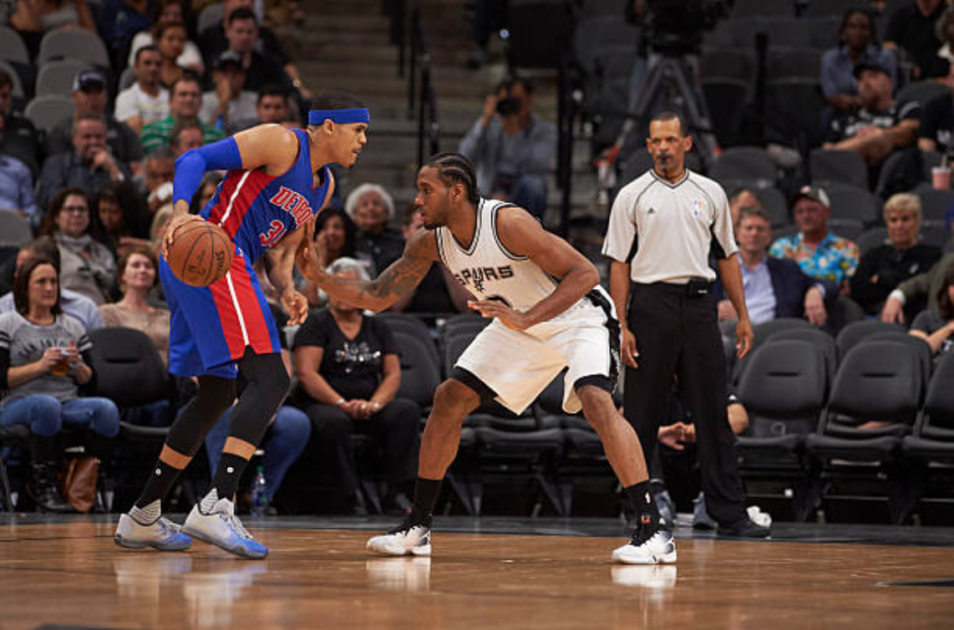A good coaching friend is hunting for a “sticky” term to offer up to his players for how they should contest shots. How would you answer his query?
Searching for a “sticky” adjective to #teach our players how they should contest shots…? @PGCbasketball @CoachBobWalsh @coachwoodley @DrewHanlen @CoachBobStarkey @BCCoachStevens @SefuBernard @CoachJimBoone @kawhileonard @UVAMensHoops
— Sam Ferry (@coachsamferry) August 5, 2018
My split second thought pulled up a picture of what I teach. Yet, before I responded, I followed with a clarifying question:
- Me: Hmm… Start me off with: How do you teach it? And, what is a positive outcome of a good contest – for you?
- Coach Ferry: High hand “on the catch,” and “affect the shot.” Goal in my mind is to take away rhythm 3’s.
Geez… I was so glad I probed further!
We often assume that the picture we have in our mind will match up with the picture that someone else has – when both sides are using the same term.
Coach Ferry asked about contesting shots. His follow up answer though referenced both a closeout (i.e. on the catch) and the contest (i.e. affect the shot). These, to me, are two different things; albeit interrelated. (It’s one of the reasons I encourage coaches to avoid using the same term when it could mean two different things! Here’s another example: Rebounding and boxing out are different.)
Back to ‘Sticky’ Language
I don’t have a sticky phrase for closeouts—not yet, at least. That’s mostly because, for me, a closeout is personnel driven. With that, I don’t have one catchall phrase for it.
My answer to what I emphasize, aligns with my answer to many of our most pressing coaching questions: “It depends!” In the case of closeouts, it really depends on… the individual on offense and/or the individual defending and/or our team’s strategy for the game and/or tactic in the situation (e.g. location on the court, time in the game or on the shot clock, match up, support, etc).
Nuance aside, allow me to share some of my core concepts with respect to closeouts…
For starters, each player needs to understand their ‘distance + direction’ (relative to offensive player) when closing out. On defense, the feet put the body+arms in a position to make the play – even if one’s strategy or tactic is running the shooter off the 3pt line and contesting from behind.
- DISTANCE = arm’s length (away) vs. half an arm’s length vs. body (to body) vs. sag (arm+)
- DIRECTION = square (ie. feet parallel to 3pt line) vs. influence (angled) vs. force (feet perpendicular, nose on hip); also, high/low side determined based on offensive player.
The Preliminary Action Sets Up the Secondary
A closeout is different from a contest. A closeout is the action that precedes the contest. The former sets up the latter… A good closeout sets up a good contest.
Closing out is about controlling the space between the defender and the offensive player.
A closeout attempts to contain/disrupt/direct the offensive player into a certain type of shot; whereas, a contest, which may or may not happen, is an attempt to block or bother the shot after the offensive player begins their vertical motion into their shot.
The closeout is about winning the HORIZONTAL GAME (i.e. distance, positioning, anticipation, directing, mirroring). This is a ‘compete’ that all players can learn (i.e. who am I? who am I guarding?). The VERTICAL GAME (contesting) is a different skill set; not available to all or not desirable in all situations (think: tactics).
Now that you have the what, here’s the how…
Bent Arm Closeouts
I’ve started teaching ‘bent arm’ closeouts. In our context, players are so good at drawing fouls with any sustained touch (or straight arm) pressure. (Besides, it looks like a foul. Refs don’t call fouls, they call what looks like a foul! )
We ask our players to close space with the feet rather than their arms.
The bent arm isn’t just for the officials. Biomechanically, bent arms allow for a more optimal use of the arms in force/power production on a lateral or crossover step in reaction to the offensive player. Without it, I’d argue, a defender isn’t as explosive as they can be (because straight arms reduce the ‘back swing’ and ‘follow through’ of the upper body).


All that to say that I’m more concerned with how players compete on the closeout. Remember, the contest is secondary—and, to a multi-skilled player, almost irrelevant (if the preliminary action isn’t done well).

(Note: That’s not sot say they can’t still be an effective team defender though!)
—s
What do you teach? How do you cue it?
One thing is for sure, I do not teach closeouts or contesting in any of these ways! 🤣
Different ways hoopers contest shots 🤣 ( tag a hooper ) @jaytheguru3 @bdotadot5 @maxisnicee pic.twitter.com/PjPAFaim3v
— Famouslos32 (@famouslos32) August 10, 2018